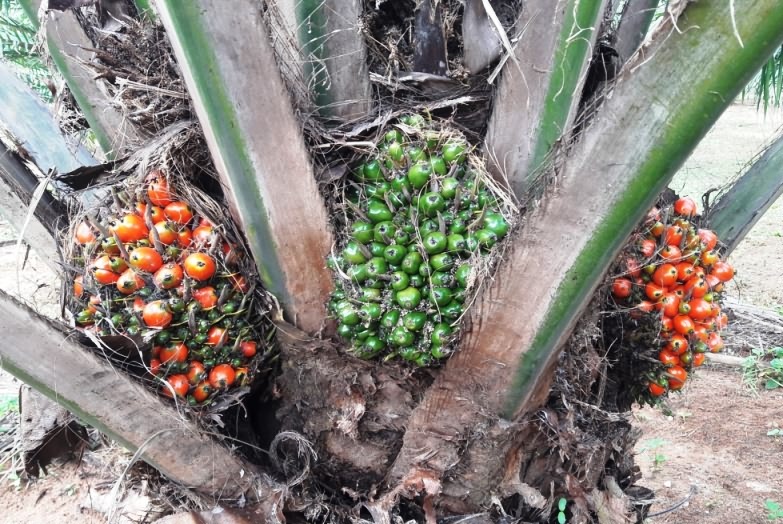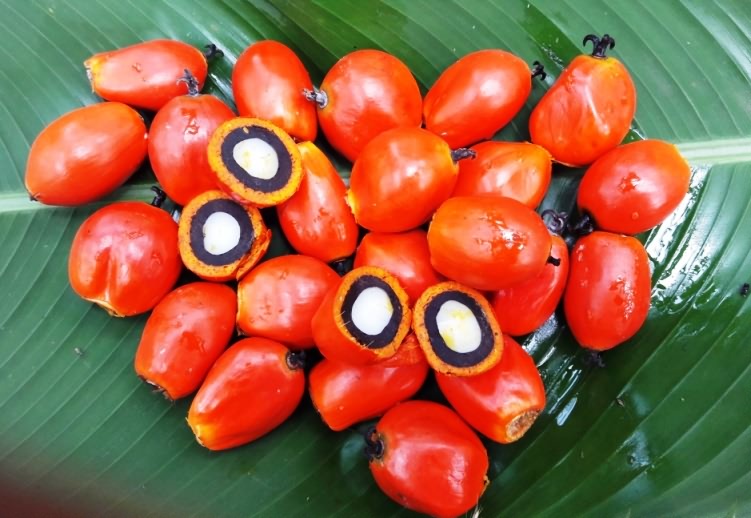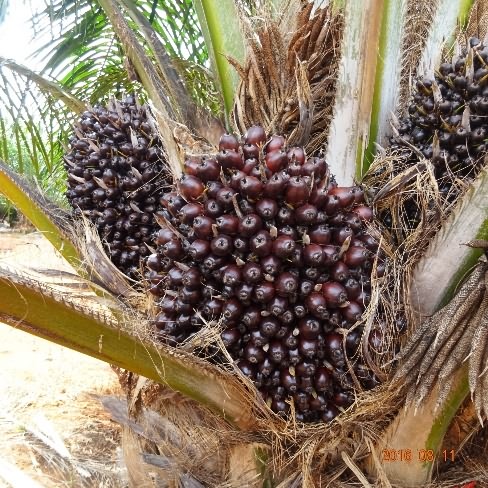उगाऐ गऐ तेल ताड़ के फलों में विविधता
Oil palm (Elaeis guineensis Jacq.) is perennial vegetable oil yielding crop. Which gives 4-6 t/ha of oil yield per hectare. Area covered under oil palm in India is around 3, 25000 hectares and Andhra Pradesh is leading in area with 1, 56000 hectares.
India is the world's largest importer of palm oil, importing of 8-9 million tonnes of the edible oil per annum from the overseas market. Palm oil accounts for over 60 % of the country's total edible oil imports. India imports palm oil mainly from Indonesia and Malaysia, the world's largest producers.
To reduce the import of oil from other country we need to increase area under oil palm with production of more oil yield to self sufficient of our country.
Variation in the fruits was observed in the oil palm. There are different fruit types and forms were observed in this oil palm. Due to this variation in fruits oil yield also varies. Different classification of fruit types and forms based on different components given in table.
Fruit types were classified based on external colour of fruits in bunch. These were mainly classified into two types: Nigrescence and Virescence. Based on mesocarp colour it was classified as Albescence. Based on fruit morphology, it was classified as Poissoni.
|
Classification |
Description |
|
Nigrescence -Rubro nigrescence -Rubilo nigrescence |
Anthocyanin in exocarp, black or brown apex to the fruit Apex brown, rarely covering more than half of the fruit; base orange Apex blackish, often covering more than half of the fruit; base reddish |
  |
|
| Fig. 1 Virescence riped and unripe bunches in oil palm |
Fig. 2 Cross section of riped virescence dura fruits |
|
Virescence |
No anthocyanin in exocarp; fruit green in unripe, orange with greenish tip with ripe |
   |
|
|
Fig. 3 Close-up view of nigrescence bunches |
Fig. 4 Cross section of nigrescence Tenera fruits |
|
Albescens |
Very low carotene in mesocarp, which is pale yellow, not orange |
|
Poissoni |
Fruit surrounded by up to six fleshy ‘supplementary carpels’, derived from stamen primordia |
Fruit forms are mainly classified as Dura, Tenera and Pisifera
|
Classification |
Description |
|
Dura |
Thick shelled: shell 2–8 mm, occasionally less, 35–65% mesocarp/fruit, no fibre ring surrounding nut in cross-section |
|
Tenera |
Thin shelled: shell 0.5–4 mm, 55–96% mesocarp/fruit; fibre ring present |
|
Pisifera |
Shell-less, usually female sterile |
There are different fruit types and fruit forms were available. Irrespective of the fruit types Tenera only using for commercial cultivation. Tenera is hybrid between Dura and Sterile pisifera. Tenera’s were cultivable in the farmer’s field due to its high oil yield.
Authors:
Bhagya, H.P. and Anitha, P.
Scientist, ICAR-Indian Institute of Oil palm Research Pedavegi, West Godavari District, Andhra Pradesh-534 450
Email:
